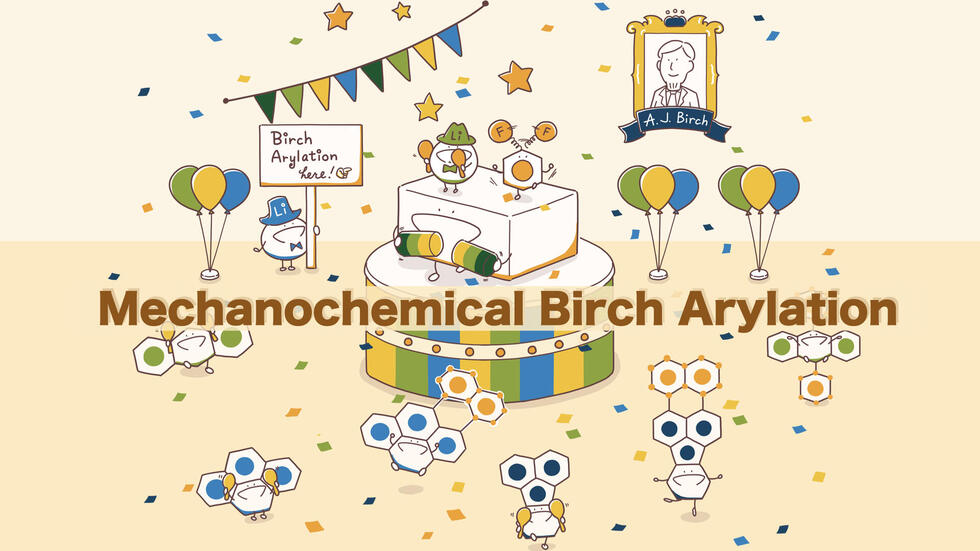
Chemistry
June 18, 2025
Creating the building blocks of technology, multiple rings at a time
A group has succeeded in performing the difficult reaction to build the bases that make polycyclic aromatic hydrocarbons (PAHs) used in organic LEDs, transistors, and solar cell technology. Their technique allows the creation of these complex molecules—valued for their unique electronic, optical, and medicinal properties—in a new, cleaner, more efficient way.
“Best of all, the technique uses simple, abundant starting materials. It uses unfunctionalized aromatics, like benzene and toluene, that are cheap, widely available, and structurally simple,” Hideo Ito of the Graduate School of Science, Department of Chemistry said. “By turning these inert compounds into complex molecules through direct carbon-to-carbon (C-C) bond formation, we can improve efficiency and costs of these important components.”
Their research adds to studies on combining aromatic rings. Aromatic rings are commonly used for building complex molecules because of their stability and because adding and fusing side groups to them can be used to alter solubility and reactivity. The team’s study expands on other groups’ research as they were able to link two entire aromatic rings together, allowing the creation of far more complex molecular structures.
Despite the importance of the findings, Ito says that his group’s willingness to experiment had a big role in discovering the technique. “Many researchers have tried this reaction but failed in solution and I imagine no one had tried it in the solid state,” he said. “Fortunately, my student, Yoshifumi Toyama, based on his curiosity, tried the reaction using a ball mill, metal lithium, and fluorobenzene, and was amazed to discover that the reaction worked.”
The reaction is categorized as “C–C bond-forming aromatic electrophilic substitution (SN Ar)-type Birch reductive arylation via the mechanochemical anionic activation of unfunctionalized PAHs”. The technique involves grinding materials together without solvents to generate high energy and facilitate electron transfer, Birch-type reduction (reducing aromatics with alkali metal), and an SNAr-like reaction.
“Lithium was used as a metal to reduce the aromatic PAH, creating a highly reactive form of the molecule,” Ito explained. “The reduced PAH becomes a nucleophile, meaning it is electron-rich, whereas the fluorine part of the fluoroarene is electron-poor. The fluoroarene attracts electrons, which results in the fluorine in the fluoroarene being replaced by the PAH, forming a new C-C bond between aromatic rings.”
By connecting aromatic rings, their technique forms biaryls, important components of pharmaceuticals; organic electronic materials, such as OLEDs and solar cells; and dyes and pigments. The new technique promises to make creating these components much more effective.
The study 'Birch reductive arylation by mechanochemical anionic activation of polycyclic aromatic compounds' was published in Nature Communications on 30 May 2025. DOI: 10.1038/s41467-025-60318-y
Authors:
Yoshifumi Toyama, Akiko Yagi, Kenichiro Itami, and Hideto Ito
Media Contact:
Matthew Coslett
International Communications Office, Nagoya University
Email: icomm_research@t.mail.nagoya-u.ac.jp
Top Image:
Mechanochemical Birch Arylation
Credit: おやすみん (Oyasumin)